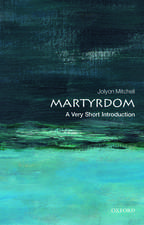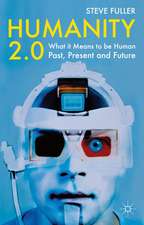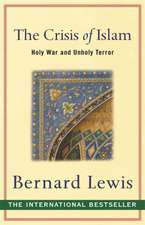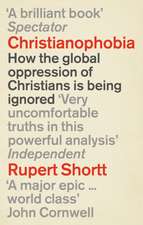Buddhism and Iconoclasm in East Asia: A History
Autor Professor Fabio Rambelli, Eric Reindersen Limba Engleză Hardback – 5 sep 2012
| Toate formatele și edițiile | Preț | Express |
|---|---|---|
| Paperback (1) | 257.97 lei 6-8 săpt. | |
| Bloomsbury Publishing – 26 mar 2014 | 257.97 lei 6-8 săpt. | |
| Hardback (1) | 891.43 lei 6-8 săpt. | |
| Bloomsbury Publishing – 5 sep 2012 | 891.43 lei 6-8 săpt. |
Preț: 891.43 lei
Preț vechi: 1141.59 lei
-22% Nou
Puncte Express: 1337
Preț estimativ în valută:
170.57€ • 178.57$ • 141.14£
170.57€ • 178.57$ • 141.14£
Carte tipărită la comandă
Livrare economică 07-21 aprilie
Preluare comenzi: 021 569.72.76
Specificații
ISBN-13: 9781441145093
ISBN-10: 1441145095
Pagini: 256
Ilustrații: 10 bw illus
Dimensiuni: 156 x 234 x 28 mm
Greutate: 0.56 kg
Ediția:First Tion
Editura: Bloomsbury Publishing
Colecția Bloomsbury Academic
Locul publicării:London, United Kingdom
ISBN-10: 1441145095
Pagini: 256
Ilustrații: 10 bw illus
Dimensiuni: 156 x 234 x 28 mm
Greutate: 0.56 kg
Ediția:First Tion
Editura: Bloomsbury Publishing
Colecția Bloomsbury Academic
Locul publicării:London, United Kingdom
Caracteristici
Presents a theoretical framework drawn from semiotics and cultural studies concerning sacredness and destruction.
Notă biografică
Fabio Rambelli is Professor and International Shinto Foundation Chair of Shinto Studies, Department of East Asian Languages and Cultural Studies, and Department of Religious Studies, University of California, Santa Barbara, USA.Eric Reinders is Associate Professor in the Department of Religion, at Emory University, USA.
Cuprins
PrefaceAcknowledgments Part I: Stuff: Materiality and Fragility of Dharma 1. Buddhist Objects, Buddhist Bodies-An Outline Part II: Histories: Instances of Religious Destruction in East Asia 2. Iconoclasm and Religious Violence in Japan: Practices and Rationalizations Fabio Rambelli 3. Shattered on the Rock of Ages: Western Iconoclasm and Chinese Modernity Eric Reinders 4. Ways of Not Seeing: Cultural Redefinition and Iconoclasm Part III: Theories: Rethinking the Relations Between the Sacred and Destruction 5. Orders of Destruction: Iconoclasm, Semioclasm, Hieroclasm Conclusion: Destruction and Cultural SystemsNotesBibliography Index
Recenzii
An extremely important publication and a major contribution to Religious Studies, Buddhist Studies, Asian Studies, East Asian History, Art History/Visual Culture, and Cultural Studies. It is precisely the sort of book that many scholars in these fields, and especially those who work across them, have been waiting for. The topic is one of great significance and timeliness, the approach is methodological and theoretically sophisticated, and the authors are sensitive to the cultural and historical specificity of their cases as well as to the wider implications of their work for the comparative analysis of iconoclasm, religion, and violence.
This book offers readers a richly textured history of East Asian visual cultures. But, the authors' semiotic turn also provides us with valuable new ways to approach the study of cultures across historical periods, geographical areas, and academic disciplines.
This book makes an important contribution to the fields of cultural and religious studies, East Asian history, art history, and semiotics, and will be thoroughly enjoyed by both specialists and senior graduate students.
This book offers readers a richly textured history of East Asian visual cultures. But, the authors' semiotic turn also provides us with valuable new ways to approach the study of cultures across historical periods, geographical areas, and academic disciplines.
This book makes an important contribution to the fields of cultural and religious studies, East Asian history, art history, and semiotics, and will be thoroughly enjoyed by both specialists and senior graduate students.


















